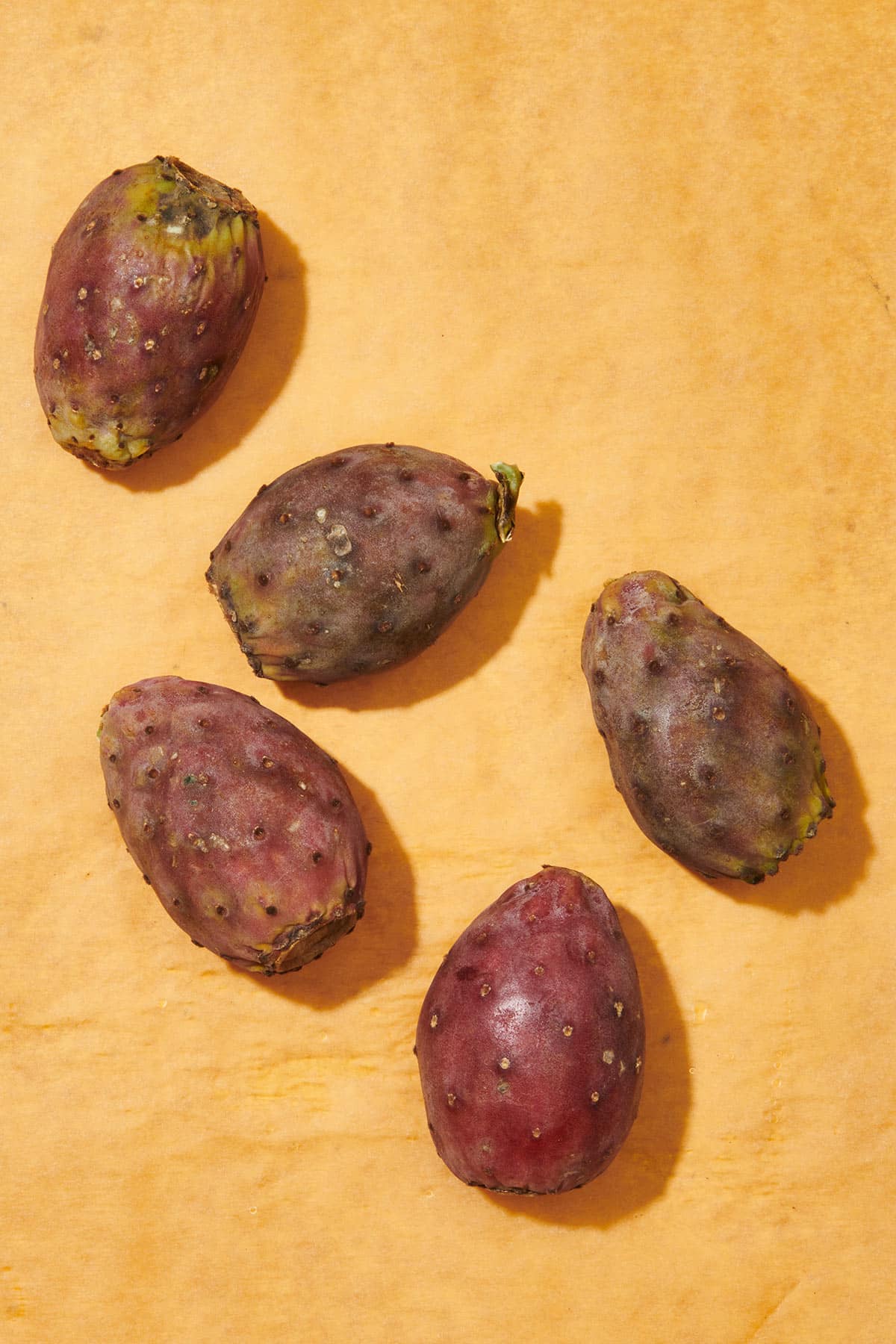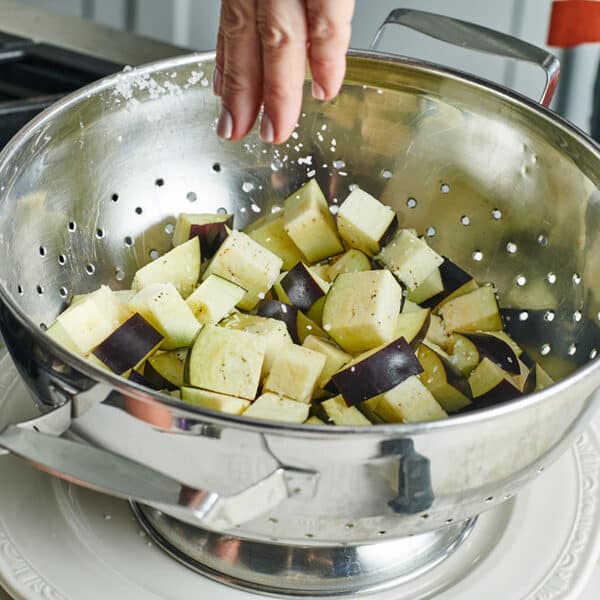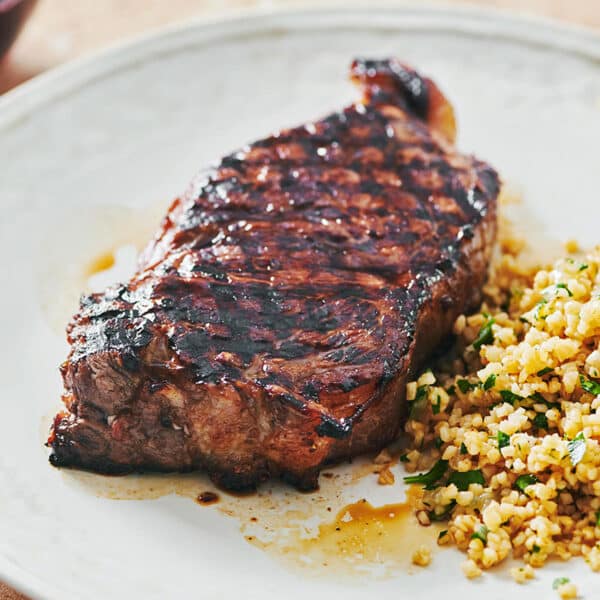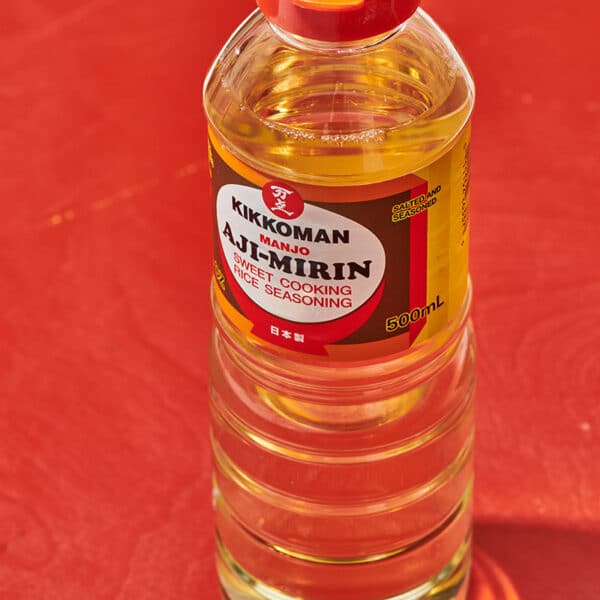How to Prepare and Eat Cactus Pears
on Mar 21, 2024, Updated Jan 28, 2025
This post may contain affiliate links. Please read our disclosure policy.
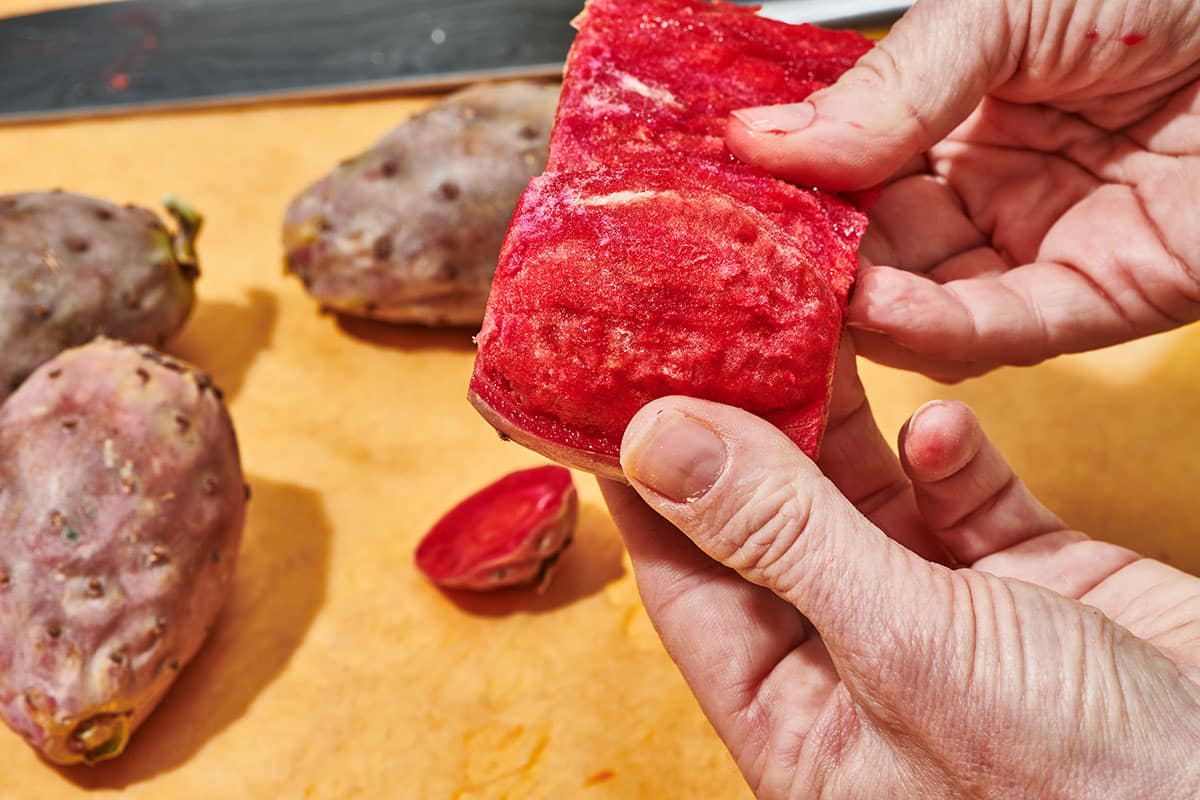
Cactus pears (or prickly pears) are one of the lesser-known tropical fruits, but they’re seriously delicious — and kind of fascinating, too! And the color — the most gorgeous deep red, perfect for pureeing and adding to cocktails (like this Frozen Prickly Pear Margarita) and mocktails of all stripes, giving them a brilliant red hue.
What's In This Post?
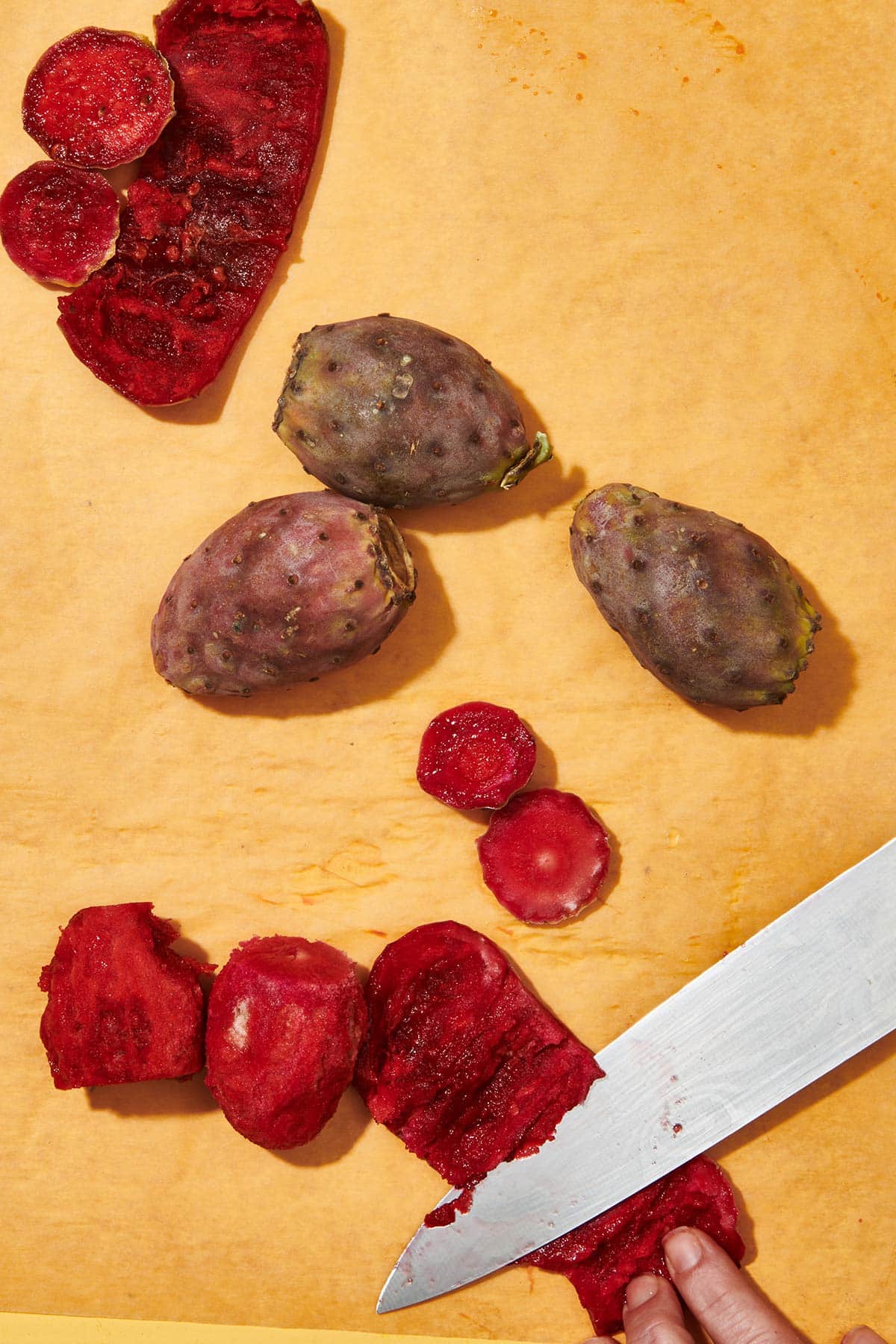
How to Prepare and Eat Cactus Pears: Everything you need to know about storing and preparing deep red, exotic cactus pears.
By signing up, you agree to our Privacy Policy.
What Are Cactus Pears?
Also referred to as prickly pears or nopales, cactus pears grow on cacti that are low to the ground, with circular, flat pads. The cactus pear is also called tuna in Spanish because the color of the fruit is a vibrant red, like raw tuna flesh. (And it really does look like tuna sashimi, but don’t be alarmed — there is nothing fishy about the taste, promise!)
The most popularly cultivated version of the cactus pear is called the Indian fig. That’s the type that you’re most likely to be able to buy in stores. These prickly pears are used in everything from jams and jellies to sorbets to cocktails, and their unique taste and gorgeous color will have you coming back for more.
Cactus pears are native to the Americas but are now cultivated in warm, dry climates throughout the world. Most cactus pears are cultivated in Southwestern areas — think Arizona or Mexico. However, there is also a genus of cactus pear called the Eastern prickly pear; this subgroup of pears is more hardy and can survive colder winters.
What Do Cactus Pears Look Like?
In the wild, cactus pears grow on cacti. They can usually be found clustered around the highest point of a cactus plant, facing the sun. When they first bloom, the growths are a pale green color; as they ripen, the fruit turns red. They are oval in shape, like a very large egg. They grow with a thorny exterior. However, once they’ve been processed for sale in the market, the spikier outer thorns have usually been removed.
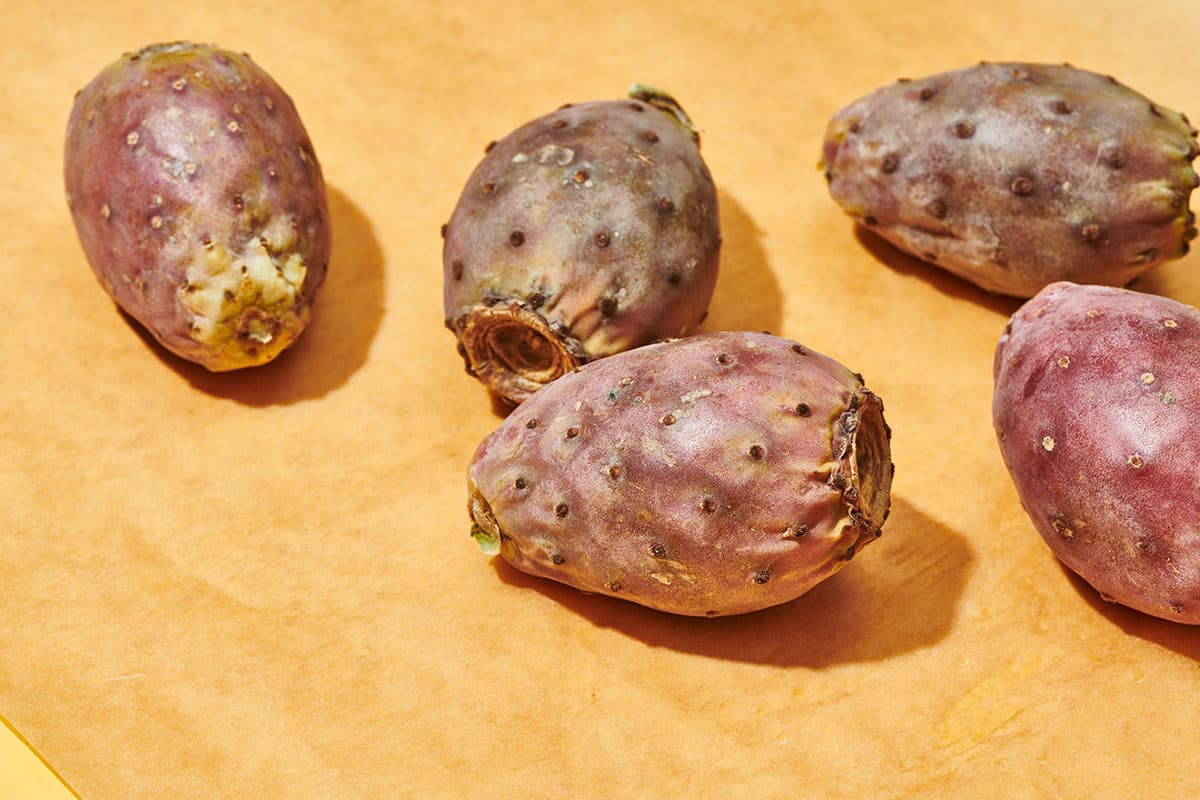
What Do Cactus Pears Taste Like?
Surprisingly, although a cactus pear and an orange might seem like they occupy opposite sides of the fruit spectrum, the fruit of the cactus pear tastes vaguely citrusy! People love cactus pears for their mildly sweet, melon-y taste. The texture of the cactus pear, once you’ve removed its outer layers, is very similar to that of the kiwi, though the seeds are much crunchier.
Where to Buy Cactus Pears
The season for cactus pears usually stretches from July to October, and that’s when you’ll be able to find fresh, ripe cactus fruit in well-stocked grocery and specialty produce stores. And you can also order cactus pears online. If you’re lucky, you might be able to find frozen cactus fruit puree year-round at big markets or those that carry a lot of Hispanic ingredients.
What Are the Benefits of Eating Cactus Pears?
Cactus pears are high in antioxidants, which means that eating them can help you fight inflammation, according to Healthline. They are also high in Vitamin C and fiber. In addition to these benefits, the fruits themselves each only contain about 40 calories — which means that cactus pears are a great low-calorie snack.
How To Cut Cactus Pears
Cactus pears are sold with their thorns already removed, so luckily, you don’t need to figure out how to de-thorn them on your own. You just need to figure out how to get to the flesh of the fruit under the thick exterior.
- To do this, take a sharp knife and cut off the top and bottom of the fruit. Next, slice down through the skin on one side (if it’s easier, stand the fruit up on one of the cut ends).
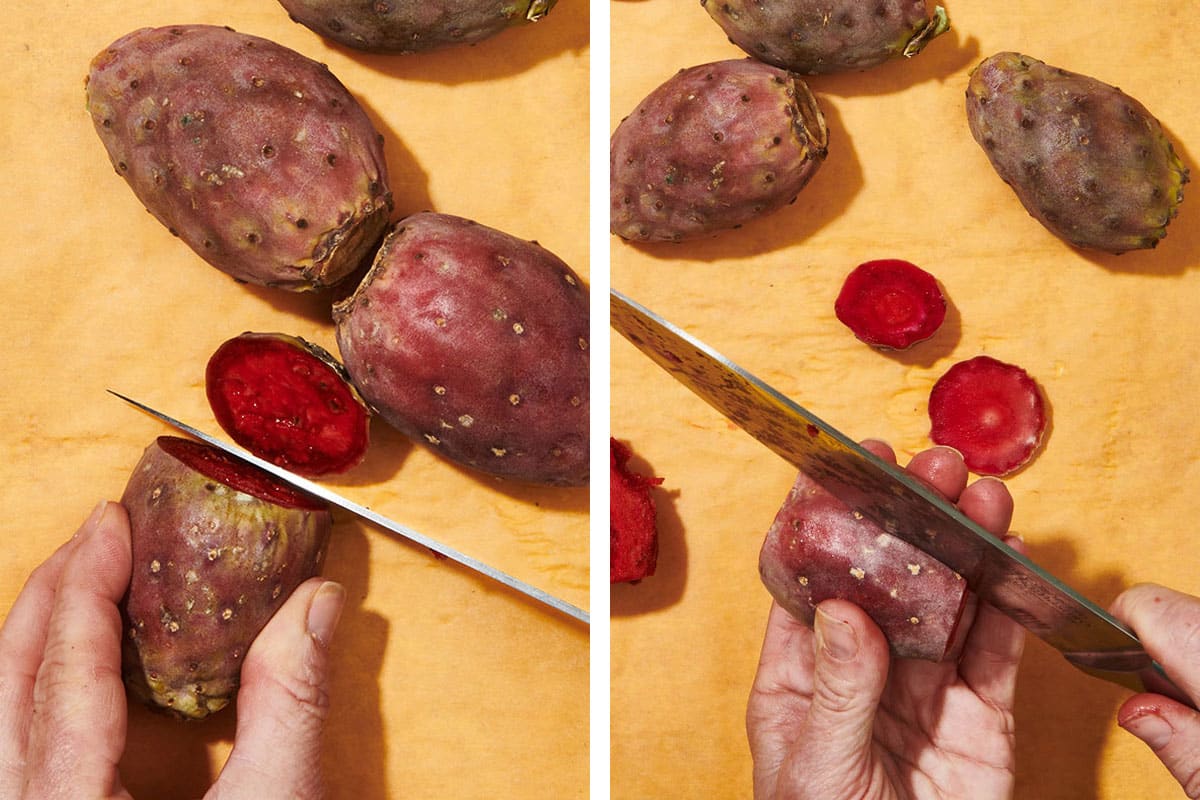
- At this point, you should be able to peel off the thick layer of skin in one piece. That skin is inedible, so you can toss it after peeling. However, if you are using the flesh for something pureed, like a drink, you can scrape off some of the pulpy flesh that adheres to the skin to minimize waste.
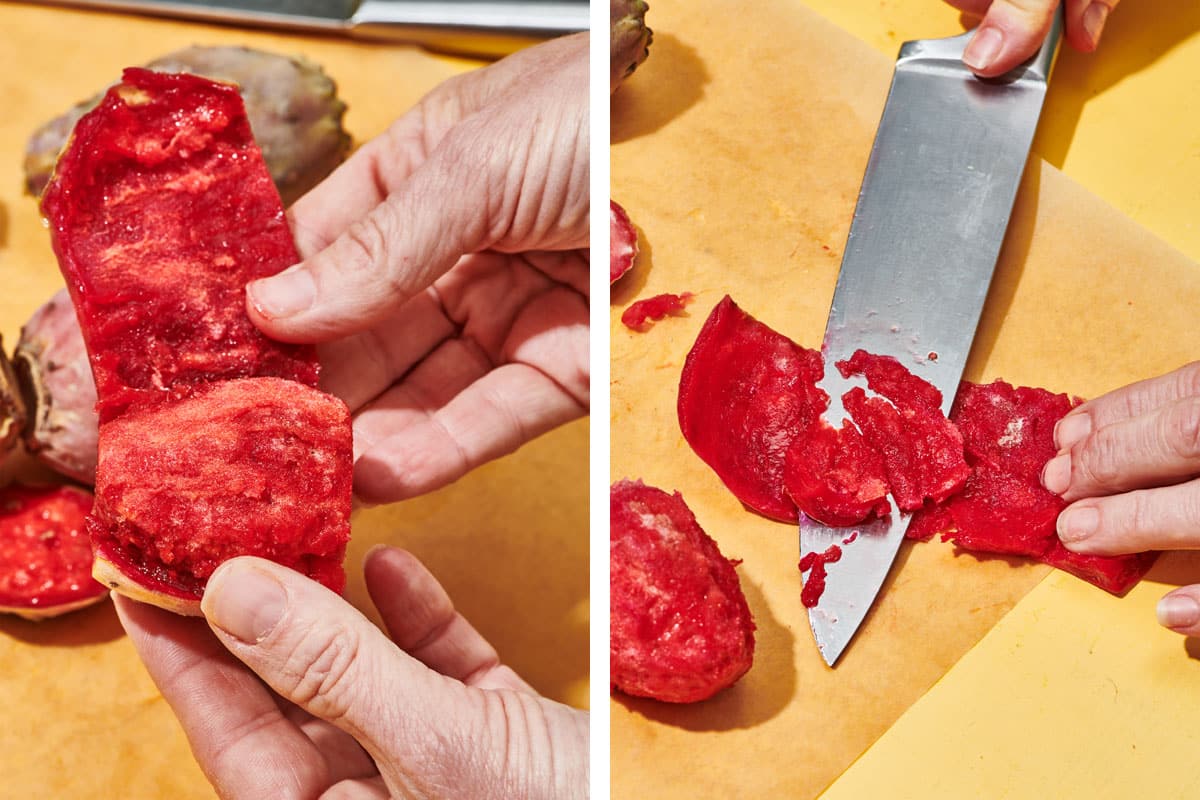
How to Use and Eat Cactus Pears
This will leave you with the meat of the fruit, which is considerably smaller than it might appear from the outside once the thick skin is removed. The seeds of the fruit are technically edible but super crunchy.
Many cactus pear lovers choose to juice and strain the fruit to remove the chance of biting down on a particularly hard seed. If you plan to use the juice in cocktails or in other ways, straining is recommended. Though once again, you will have a smaller yield than you might wish for…that’s the price to pay for cooking with this wonderfully exotic fruit.
Once you’ve extracted the prickly pear from its skin, you can either just snack on it alone or use it in your cooking. In Mexican cooking, the cactus fruit is used to create queso de tuna, a traditional fruit paste eaten as a dessert. It is also the main ingredient in the Mexican alcohol colonche, which is famous for its brilliant red color. It’s also used in chiquito, another fermented beverage that mixes the juice of the cactus pear with cinnamon for a singular taste and aroma. If you just feel like mixing a few chunks into your smoothie, that will taste great, too!
Storing Cactus Pears
You can keep unpeeled cactus pears on the counter for up to a week. Once they start to soften, move them to the fridge where they will keep for another 4 to 5 days.
After they have been peeled and sliced, you should store them in an airtight container in your fridge for a few days. Same with the strained puree. If you choose to freeze the puree, it will last up to 2 months.
Fun Facts About Cactus Pears
Did you know that cactus pears are also called “the devil’s tongue” because of their red color and thorns? Here are some other fun facts about cactus pears:
- Prickly pear trees are actually the state cactus of Texas (I didn’t even know some states had state cacti).
- The cactus pear plant is considered a weed in some areas! Explorers introduced cactus pears to Australia and Southern Africa in the late 1700s, and the plant spread so successfully that it became a true invasive pest. Think of all those margaritas that didn’t happen….
- Prickly pears got a shoutout in the song “The Bare Necessities” in the 1967 Disney movie The Jungle Book. In this song, Baloo sings, “When you pick a paw-paw, / or a prickly pear, / and you prick a raw paw / next time beware!”
